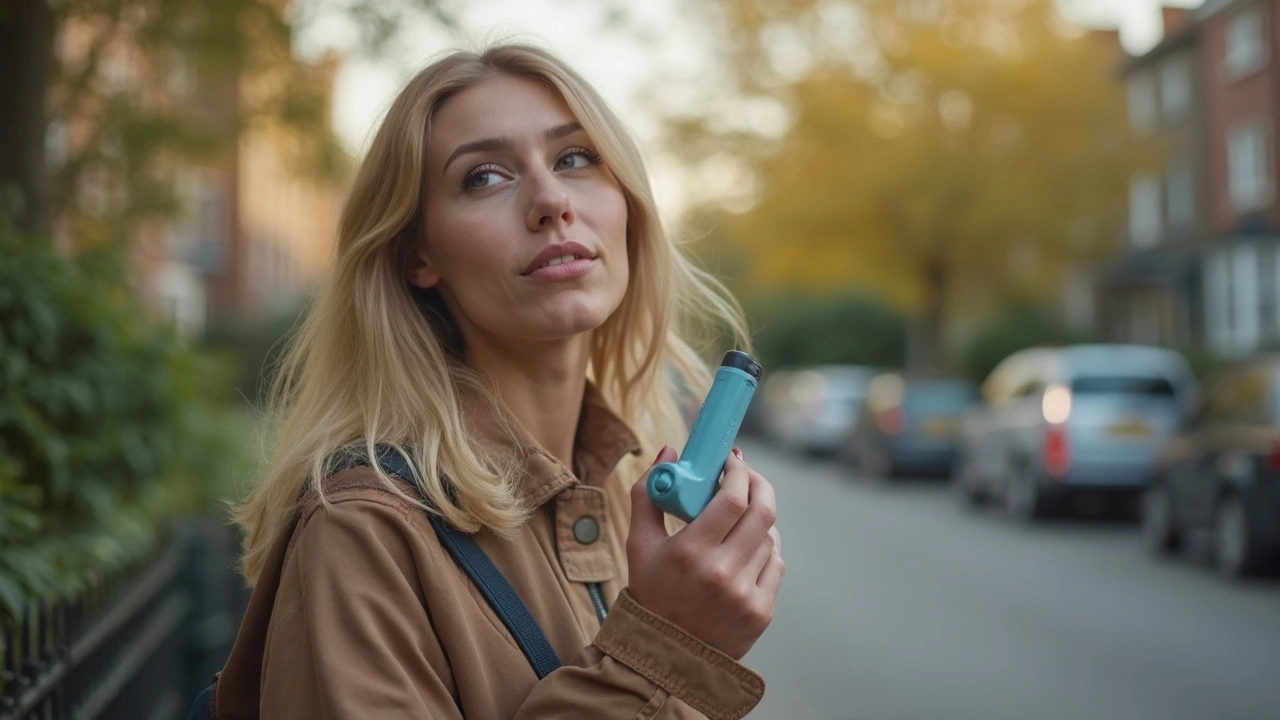Rescue inhaler: fast relief for asthma and sudden breathing problems
Got tight chest, wheeze, or sudden shortness of breath? A rescue inhaler is the fast-acting tool most doctors give for those moments. It delivers a quick dose of bronchodilator that relaxes airways so you can breathe easier within minutes. Think of it as your “get-breathing” device—not for daily control.
Common rescue meds include albuterol (often called salbutamol outside the US) and levalbuterol. They start working in 5–15 minutes and last about 4–6 hours. They stop symptoms fast but don’t reduce long-term inflammation. That’s why they pair with controller medicines like inhaled steroids when needed.
How to use it right
Shake the inhaler well, breathe out fully, put the mouthpiece between your lips, press the canister as you start a slow deep breath, then hold your breath for 5–10 seconds. If you have a spacer, use it—spacers reduce throat deposition and help more drug reach the lungs. For kids, spacers with masks make use much easier.
Most action plans say 1–2 puffs every 4–6 hours as needed. If you need more than two puffs or use a rescue inhaler more than twice a week during the day, talk to your doctor—your asthma may be under-treated. If symptoms don’t improve after using 2–4 puffs or you see worsening breathlessness, call emergency services.
Storage, maintenance, and safety tips
Keep the inhaler at room temperature and away from direct heat. Check the expiry date and track doses if it doesn’t have a dose counter. Prime a new inhaler (spray into the air) and clean the mouthpiece weekly. Never share your inhaler—cross infection and wrong dosing are risks.
Side effects are usually mild: tremor, fast heartbeat, nervousness. If you notice severe chest pain, fainting, or a fast irregular heartbeat, stop and seek urgent care. Also tell your doctor about heart disease, high blood pressure, diabetes, or thyroid problems—some rescue meds can affect these conditions.
Buying and refilling: You usually need a prescription. Many online pharmacies carry rescue inhalers, but buy only from licensed sources and check the product and seller reviews. Watch for counterfeit or expired products. Keep at least one spare inhaler in your bag or at work, and make refill reminders so you never run out when you need it most.
Kids and seniors need plans tailored to them. Teach children how to use a spacer and keep emergency instructions visible. For older adults, check technique and hearing/vision limits that might affect use.
A rescue inhaler is simple but powerful. Use it when you need quick relief, keep track of how often you use it, and see your provider if usage climbs. If you want, RXConnected has guides on inhaler types, spacers, and finding legitimate pharmacies to refill yours safely.
Quick checklist: carry the inhaler and spacer, check the dose counter, prime new devices, record each use, replace expired canisters, never share it, and call your doctor if you need rescue doses more than twice a week or if symptoms worsen despite treatment.
Ventolin Inhaler: Uses, Dosage, Side Effects & User Tips

Wondering how Ventolin really works? Get the facts on uses, dosage, side effects, real-life tips, and unique info to help get the most from your inhaler.
